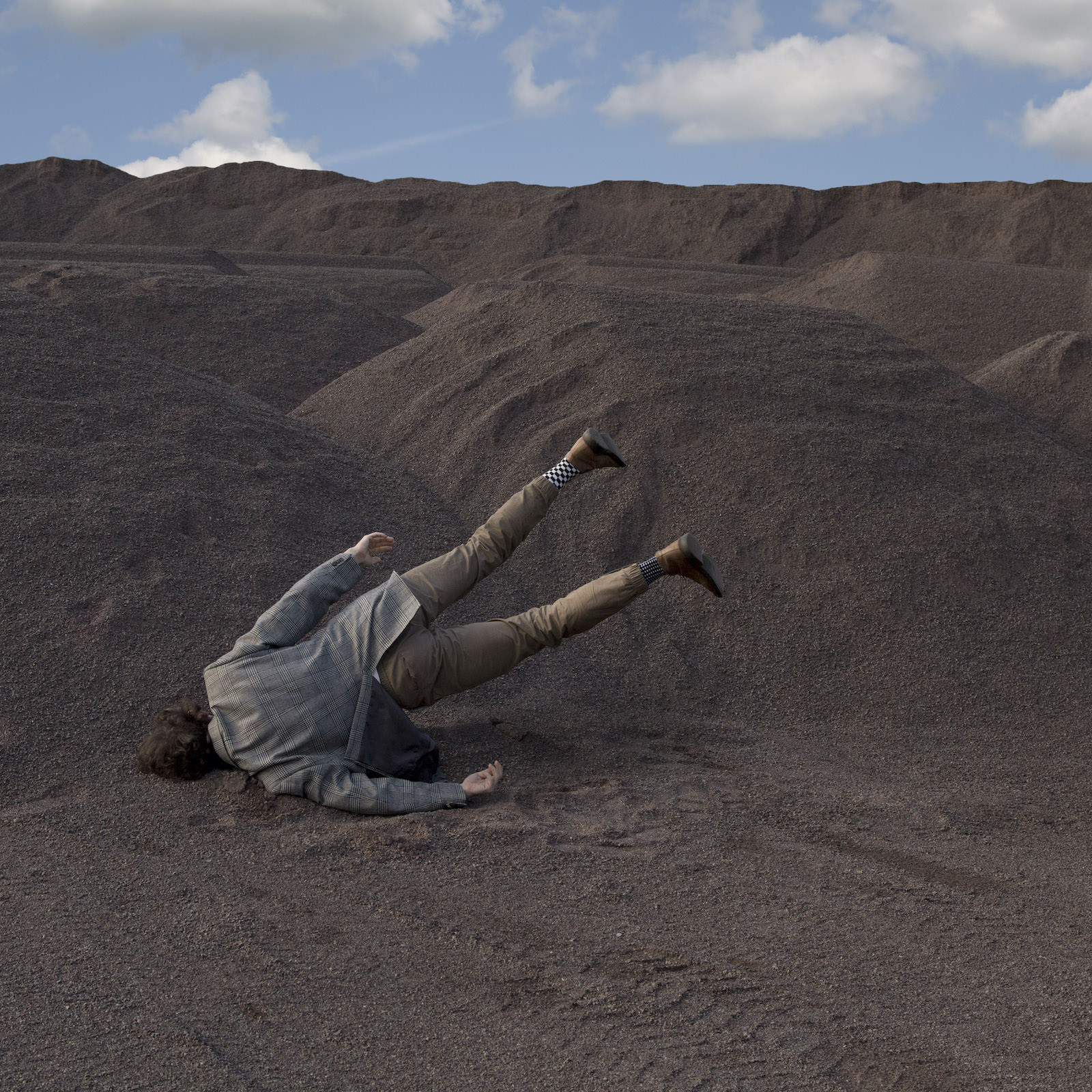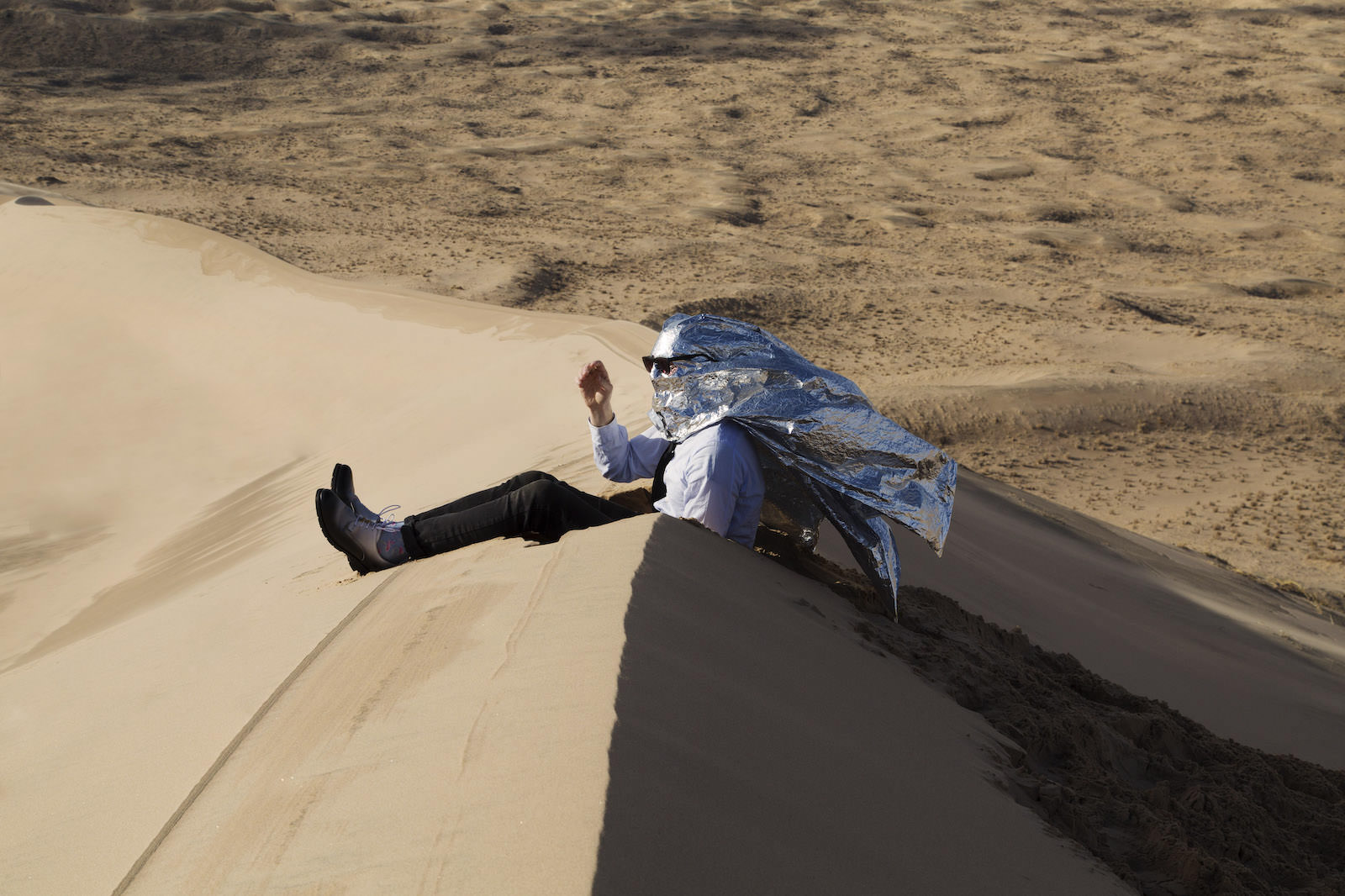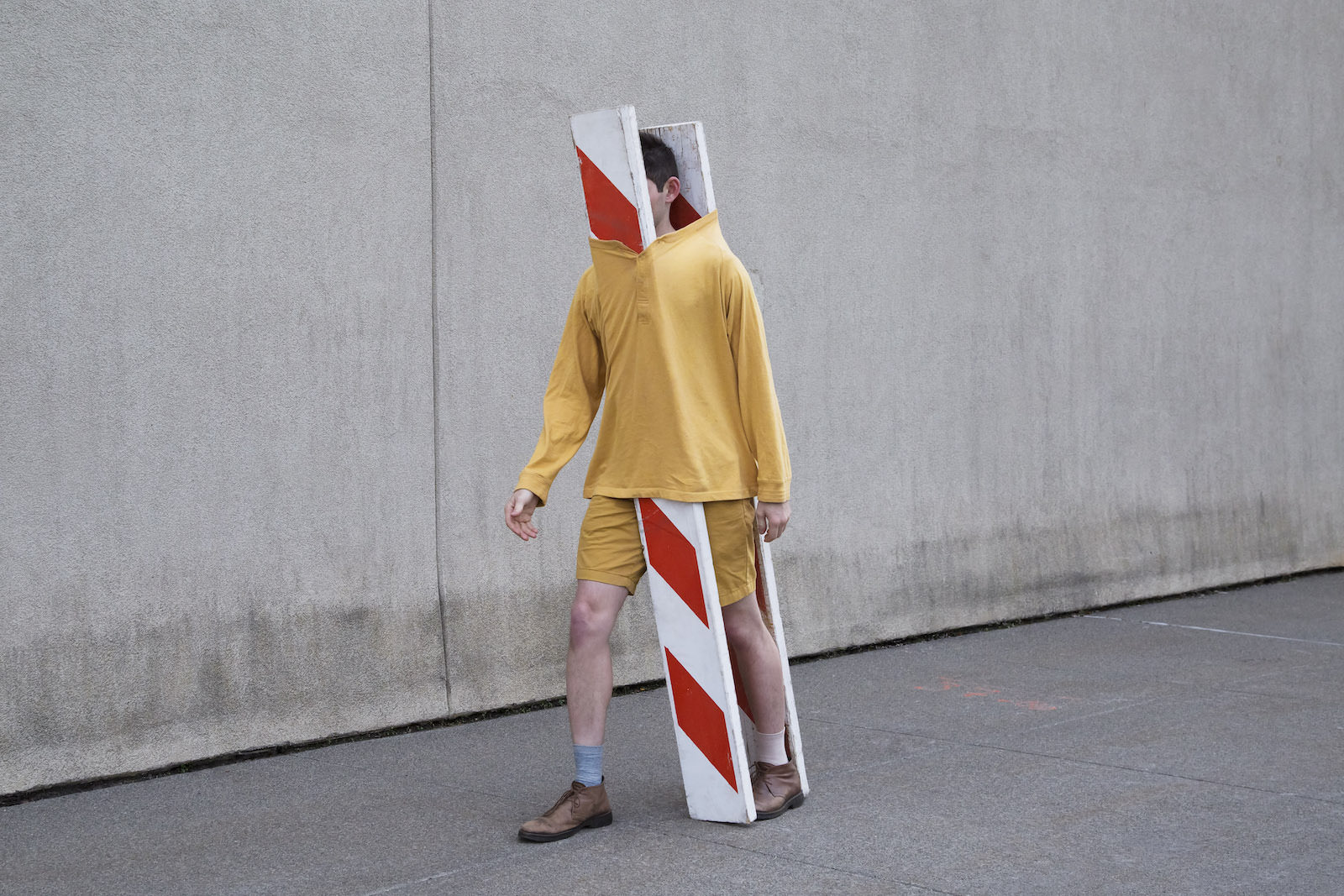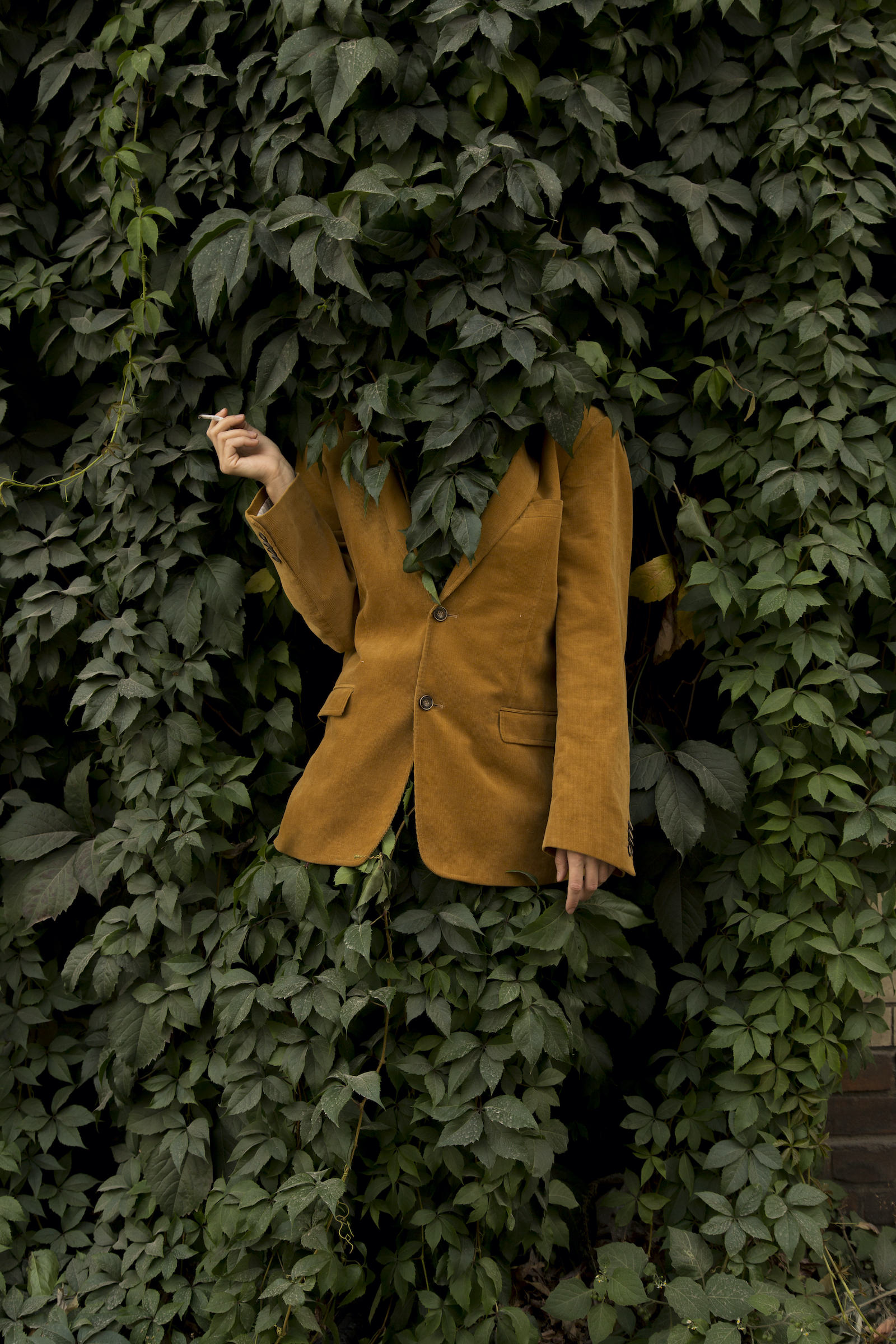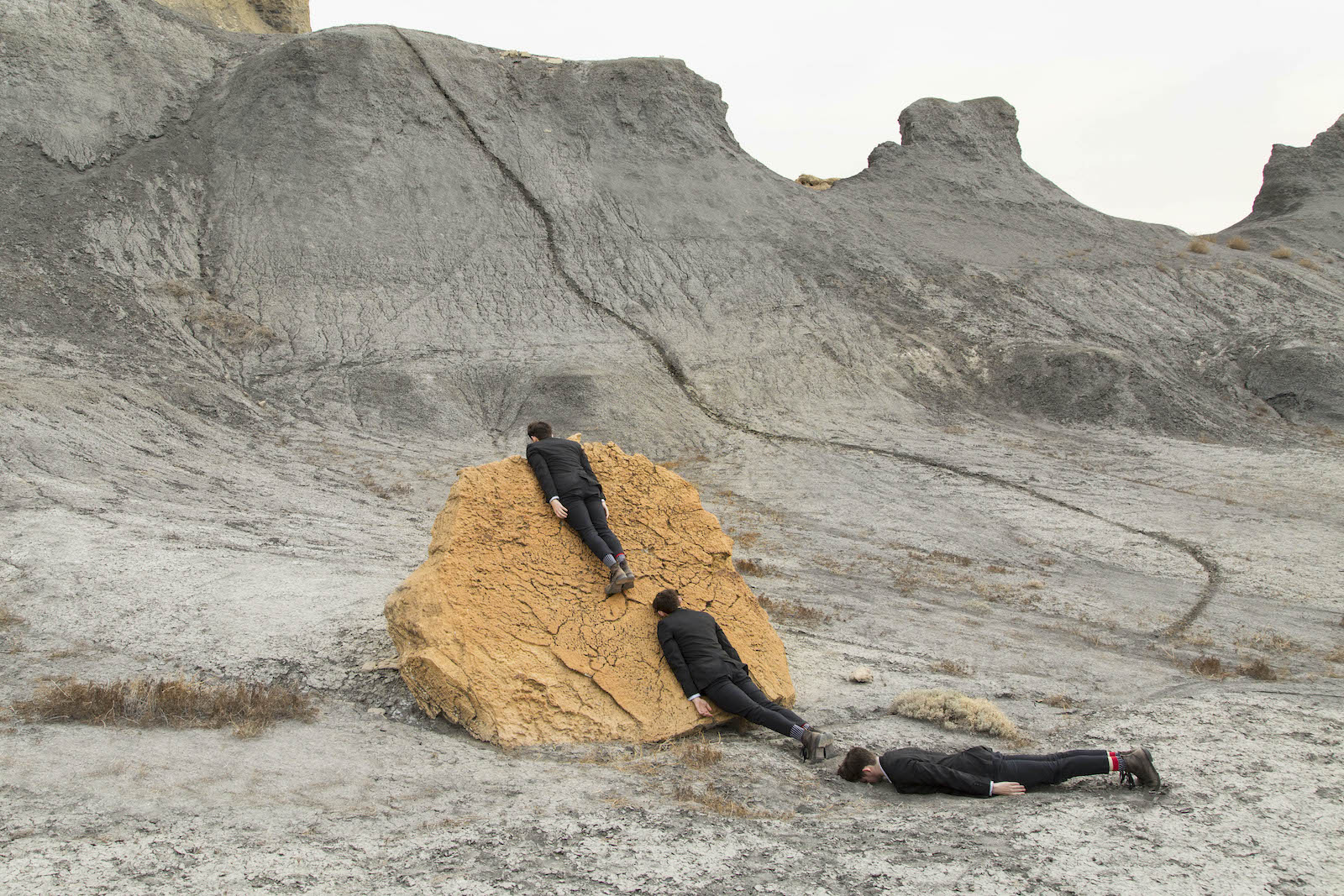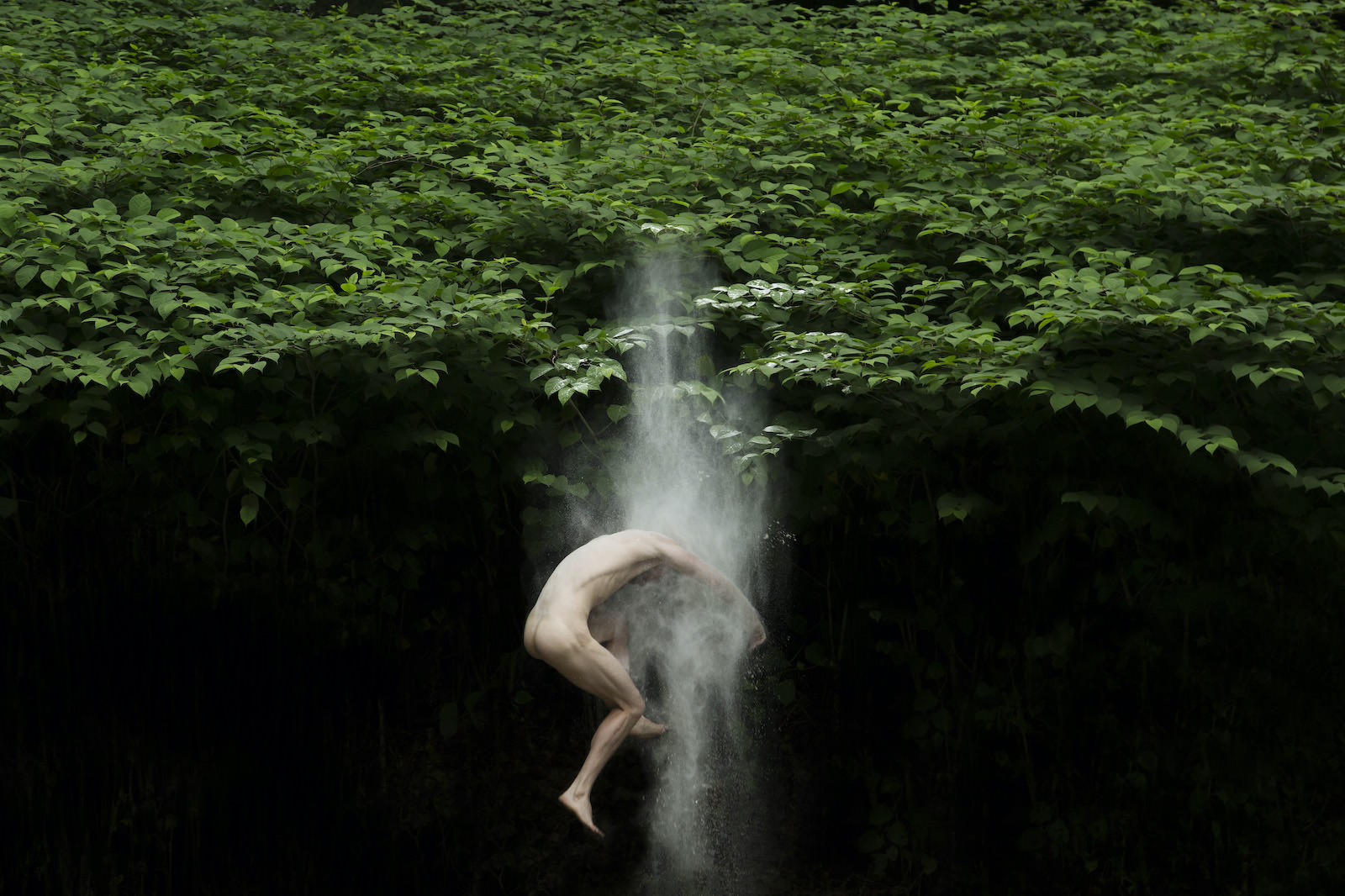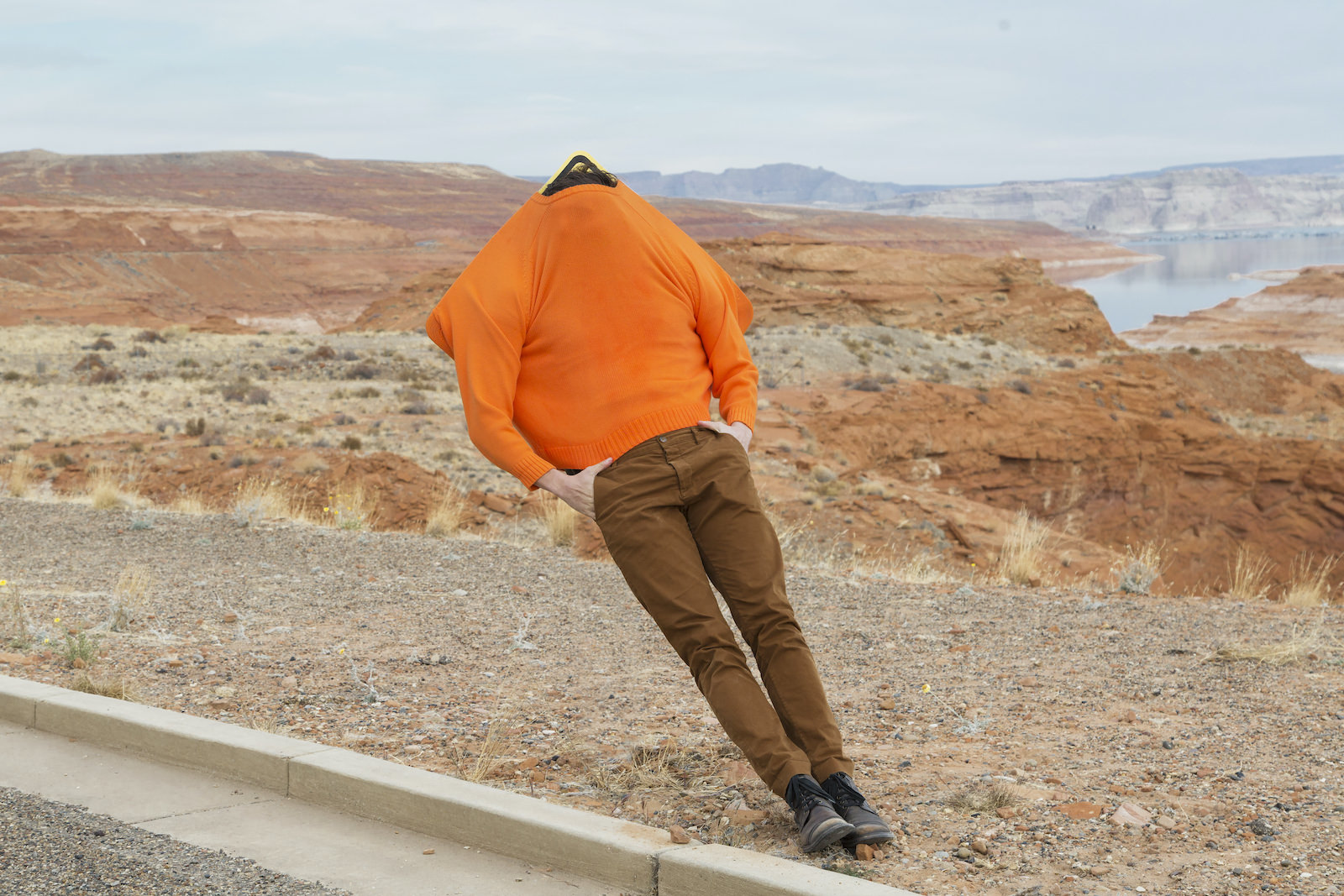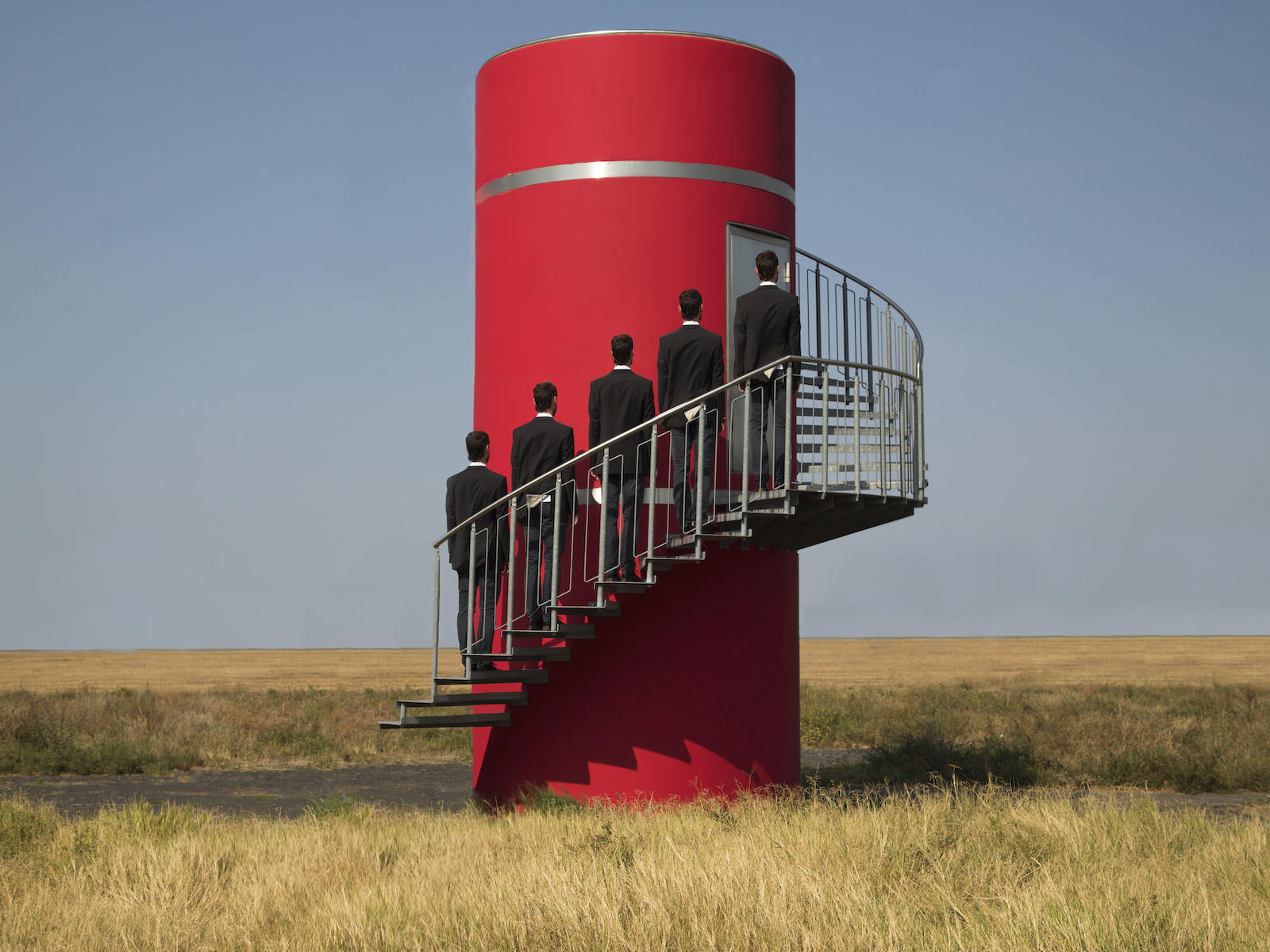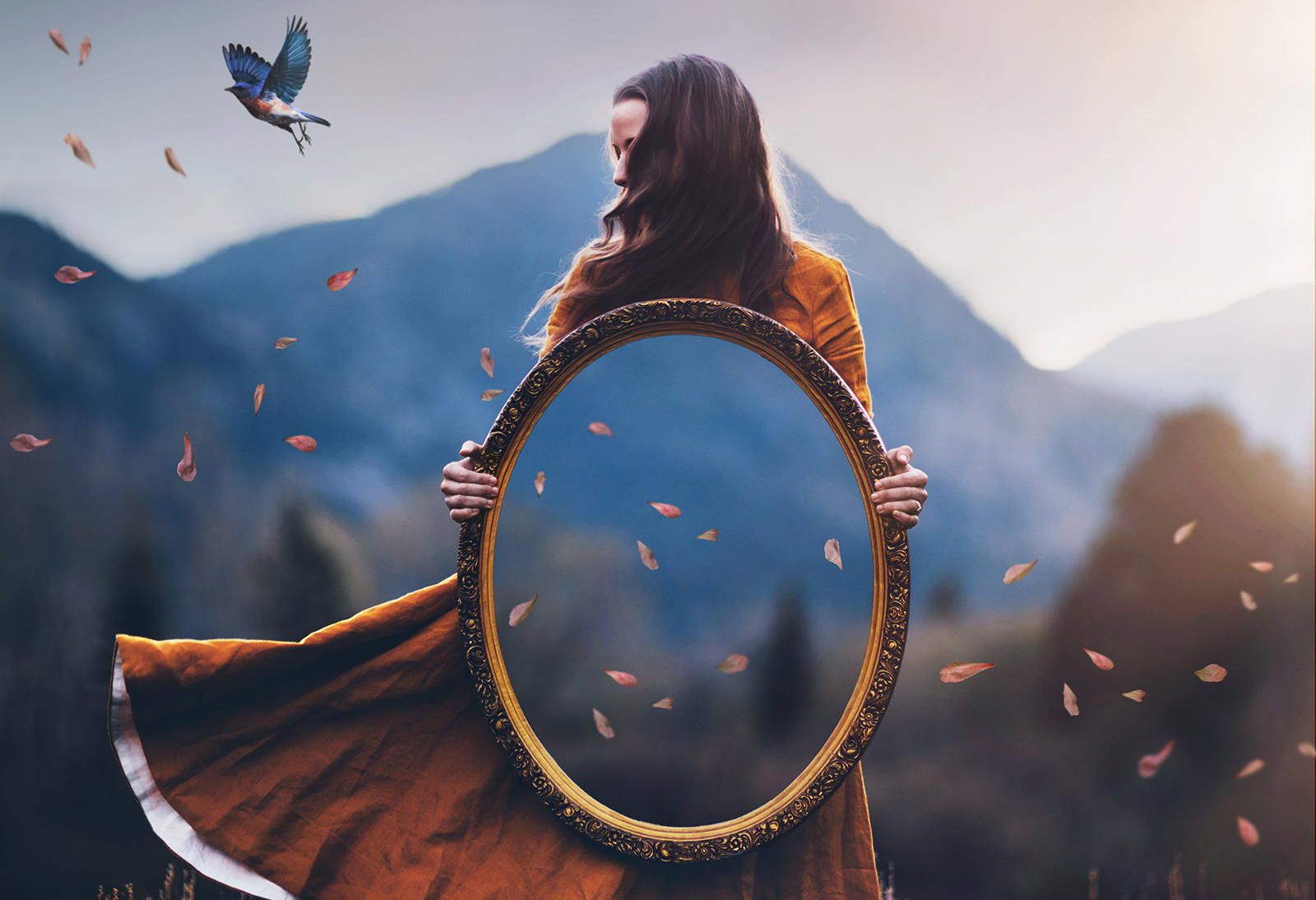
The Art of the Surreal Selfie with Ben Zank
As the main character in most of his own images, Ben Zank is no stranger to the art of the selfie. But for this New York City-based photographer, expressing himself in front of the camera goes beyond the typical headshot.
Ben’s work explores our common feelings of isolation and loneliness, as well as our relationship to nature. While the majority of Ben’s photos use basic, everyday props to shift the viewer’s perception of reality, he’s also been making a living behind the camera for the past three years doing commissions and campaigns for commercial clients – particularly clothing companies, which he says seem to gravitate toward his style of simple surrealism.
Though Ben got his start on Flickr, shooting self-portraits every day for a 365 project, his work has now been published and exhibited around the world. We chatted with Ben about how Instagram has changed the meaning of the self-portrait, how the natural world influences his unnatural compositions, and how his color blindness impacts the way he uses color in his work.
When did you first begin to consider yourself a photographer and artist? How did you get your start?
So, I first picked up the camera at the age of 18. I was coming out of high school and trying to figure out what I wanted to do with myself, and I was trying a bunch of different, I guess, creative avenues. One day, I was at my grandmother’s house and she let me rummage through her attic, and I found her old Pentax ME Super in perfect condition.
I was super excited about it, and she let me take it home. I didn’t even know how to open up the back of the camera, so I couldn’t even shoot with it for three months. But once I figured that out, I was hooked. And then, by my next birthday, I was begging my parents to help me get my first digital camera. And then I joined Flickr; the rest is history.
I ended up getting into a lot of self-portrait photographers; I’d followed them and saw they were doing 365. So several years later, when I was in college and I was majoring in journalism and kind of really disenchanted by it, I decided that I didn’t have anything to lose, so I started my own 365 that I did on Flickr and ended up making a lot of other friends through that.
I didn’t really start considering myself an artist until much, much later on. Even still, to this day, if people ask me what I do, I’ll say, “I’m a photographer, but…” I either refer to myself as a photographer or artist, but I would more consider myself an artist because I don’t shoot weddings or do headshots. I’m kind of just out there in the woods sort of messing around.
What artists or photographers do you most admire? And how has their work influenced your own?
Oh, so, so many. When I first started my 365, I think the style of photography that I was doing was very limited, but before and after, I was very interested in many different styles and sort of trying to emulate a lot of different photographers. In the past, I would really look toward any photographer or artist – hundreds of them – and I could name so many.
But I would say key influences, in the beginning, I would definitely say Gregory Crewdson, Alex Prager, Andy Goldsworthy, Rodney Smith, Viviane Sassen, and Synchrodogs.
Your work is clearly very creative – you’re not just going out and looking for scenes to capture, you’re building them on your own. What inspires these pieces? Where do the ideas come from?
I’m very location-oriented when it comes to the work that I make. That being said, I don’t necessarily leave the location as is – it really comes down to, you know, how the light is looking, what elements are in that specific spot, how I want to set up the composition.
It’s very spontaneous. Sometimes I have a set idea and I go into the shoot knowing exactly what I’m going to do, and other times I have no idea. I think one of the most recent photographs I have that I posted on Instagram, I was in the woods, I had no idea what I was going to do, and there was a piece of translucent plastic that was just there, and I was like, “All right, we’re using this.”
I’m not taking too much into account, like how the background should look or where it should be, because when you live in New York City, you can only control so much about your environment, unless you’re working in a studio. And I don’t work in a studio. Sometimes you have to just let the background and the environment do its thing, even if it’s not the best thing for the image. Even if you know it could be better – sometimes it’s not about the background, sometimes it’s just about the concept.
And then, after I take the image, I can really alter a lot in post-production in Photoshop to sort of change the way the image looks entirely. Not to the extent where it looks unreal – to keep it looking as natural as possible, but sort of give it that little spark where you just think, “Well, that’s kinda strange.”
There aren’t many faces in your photographs – why not? How do you create all the emotion in your images without showing faces?
Well, I think it’s definitely hard to get emotion out of an image when there’s no face to connect with. With that being said, I think it’s too easy to get emotion when you have a face. I think it’s more intriguing to create a dialogue with just the figure of a body, rather than just “Oh, make this sort of face,” or “look this way.”
It’s very easy for people to get distracted by the faces and images rather than actually look at what’s going on. When you dilute the face, you give people a chance to take in the entire image. Let’s say you have a portrait of a girl in the woods and you know the girl is really attractive, so everyone’s just going to be looking at her face and no one’s going to actually pay attention to the rest of the image.
Some of these feelings and ideas include loneliness and our relationship to nature. What draws you to these recurring themes, and how does your photography help you explore them?
Well, number one, it’s difficult to get more than one person in an image from time to time. Most of the time it’s me, by myself, and then other times I have one other model. Essentially, it takes a lot of planning to get more than one or two people in an image, so more often, if I do have more than one person in image, it’ll actually be the same person and I’ll just duplicate them. And number two, I guess it’s a representation of how I feel sometimes, especially going through winter months.
I’m single, so it’s very lonely. But it’s also just an interesting concept to explore. I wouldn’t say I’m a minimalist photographer, but I definitely like elements of minimalism in my work, and this sense of just having one person sort of engulfed by this bizarre space is intriguing to me.
How do you hope your photography impacts viewers?
I don’t really have any hopes. I guess I want them to take away what they want to take away from it. As long as people feel a certain way, then I think then I’m doing my job.
Despite the use of a lot of natural shapes and settings, your work is very graphic and minimalist. How do you achieve such a great balance?
Trial and error, really. A lot of work, I think, doesn’t always hit that mark, and then some of the time it does. When you get a little bit of good, it always outweighs the bad because that’s what you remember, the good. Honestly, a lot of times I don’t achieve what I’m going for, but I still want to share it with people.
I like to put everything out there, even if it’s not the best, because I know at the end of the day, even if I don’t think it’s good, maybe other people will see something in it. In the past, a lot of images that I wasn’t too fond of, they sort of grew on me after I shared them with people and saw how much they resonated with other people.
A lot of surrealism involves vibrant, exciting colors, but your shots are more muted and toned-down. Why? What impact does this have on your work?
People don’t believe when I say this, but I am actually pretty colorblind, so it’s more me just playing it safe. I can obviously see colors – I know when something’s a certain color and I know how to use it in tone. But I think it’s more about, if I go over the top with something, I feel like it might look strange because I don’t know exactly what kind of color I’m working with from time to time.
What are some of the challenges you face when you are your own model? Has the meaning behind the self-portrait changed, with the rise of the selfie?
So many things. Just having the self-confidence to shoot in locations that could be a little public. For me, it’s very nerve-racking to go in a semi-public area and then do something as strange as what I do, when I know that people can be around. It’s much more comforting to have at least one other person there because you have that sort of official vibe going on.
I have to be the art director, the photographer, the model, the stylist – I have to do everything on my own. And then, at the same time, I have to do a lot of physical stuff, which can be really strenuous because I’m not in the best shape all the time and a lot of the stuff that I like to do can be very physically taxing and challenging, so I like working with a lot of dancers.
If you see any images where it’s like, “How did he do that?” – it’s definitely not me. I have an image of a guy who, he’s standing on his head – that’s not Photoshop, and it wasn’t me. It’s a dancer.
I’m not deeply, personally affected by it, but I’ll say that I think commercially, the romanticism of the self-portrait… it’s been completely deluded by how available cameras are to everyone. You know, even 10 years ago, if you wanted to spend a lot of money on an iPhone, you’d have an iPhone, but now everyone has a camera and everyone can take a self-portrait and take pictures on it. It’s much less romanticized, really.
It’s more of just sort of a statement rather than how photographers in the 70s and 80s were viewed when they took a self-portrait – it was a big thing, “Oh, it’s a self-portrait.” Now, it’s like, “Oh, you took a selfie with your phone.” I think it’s just a product of the changing times, like typewriters. Having someone with a typewriter was a cool thing, and now anyone can type, everyone has a computer. It’s just technology changing the paradigms. I never really changed my opinion on it or thought much about it, and I personally wasn’t a fan of the term “selfie,” ever.
Do you have any particular habits that are a part of how you begin your creative process? What do you do when you hit a wall?
I wish. You know, if there is, please tell me. Give me tips.
My best tip for anybody who is struggling to be creative, because I struggle all the time, is just do something, you know? When I was doing my 365, it could be 10 degrees out and I’d go out and shoot and the image would be garbage, but you’re forcing yourself to do something. Get as many of the bad ideas out as possible so that the good ideas can come. I would say that’s how it works. So, you know, whenever I have a chance or whenever I’m feeling up to it, I will go outside and I will do something. I might not always come back with a great photo, but that’s one step closer to getting to the next successful image.
What do you think makes for a successful photograph?
That’s a good question. There are a lot of factors. Outside of basic things like composition, subject matter, and color, there are a lot of unknown factors (at least in my case) that can completely change the direction of an image. So, I wouldn’t say I know exactly what makes a successful photograph as I find that my mistakes end up being my successes more and more these days. I would say that over the years, my ability to spot what is going to work has also improved significantly.
What kind of post-processing do you do? How long does it take you to complete one image? And how do you know when your image is ‘done’?
It really varies. The actual time that I spend working on an image is maybe, I’d say, anywhere from two to six hours in total. But these days, I will sit with an image in Photoshop for sometimes weeks before making a change, just so I can constantly be looking at it, like, “Is this something I want to go ahead with?” A lot of the editing, I’m doing in my head before I actually do it. And then, you know, I’m not actually that talented at Photoshop.
I’m trying to learn every day to get better, but there are a lot of things that bamboozle me sometimes. But generally, I spend a long time on each image. In the rare cases, it’s sort of like the image is already there, and it’s really quick, but it’s very, very seldom that that happens.
It’s like a painting – you could just keep doing stuff. There could be an image where there is some dust or some particles on the ground, and I’ll clean that up but, you know, do you want to spend another 10 hours cleaning up the whole thing? Is it really going to make the image that much better? If it is, then do it. But, you know, it’s personal preference, really.
What are you focusing on right now, in your work and photography?
I wish I could say that I had big projects, but all of the big things I did were back in October. I had a solo show in Shanghai and I did these two large campaigns for these two companies. I’ve been kind of just relaxing since then, and I’m waiting for the next big project.
I’m going to be going into the desert, and then just shooting some personal work. And then later in the year, I’m going to Japan, and also trying to travel and shoot some personal work there. And maybe hopefully finish this book that I started.
Ben Zank’s work will speak to anyone who has experienced feelings of loneliness, detachment, or withdrawal, offering evocative insights into his own inner emotional struggles. Find more of his photography on his Instagram or his website.
